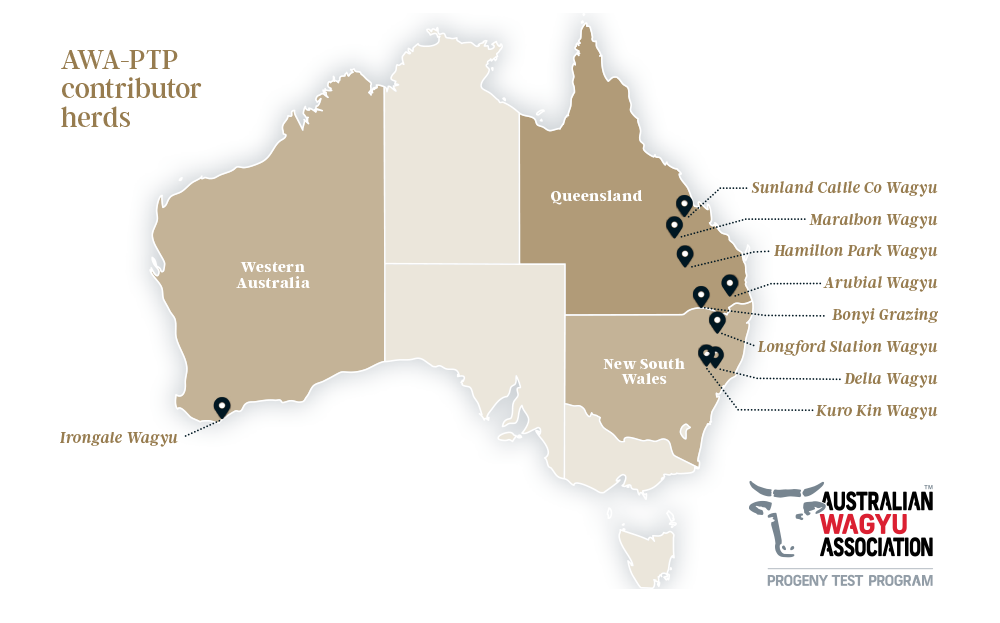The Australian Wagyu Association Progeny Test Program (AWA-PTP) is making huge progress in enhancing Wagyu genetics throughout the industry. The aims of the PTP are:
- Generate comprehensive progeny test data on approximately 250 emerging Wagyu bulls.
- Capture data on approximately 3,500 female progeny for new and hard to measure traits including female fertility and maternal performance.
- Capture data on approximately 3,500 steer progeny for feed efficiency and structure as well as new carcase and eating quality traits.
- Produce high-accuracy EBVs for Project Sires and Contributor Cow Herds as well as benefit the rest of the Wagyu population using genomic analysis and genetic linkage.
- Improve outcomes of breeding decisions and increase the rate of genetic gain within the Wagyu breed.
- Expand the diversity and size of the reference population for the Wagyu breed, leveraging the AWA genomic, pedigree and performance data.
Nominations are open to AWA members for your sire/s to be considered for Cohort 4 of the AWA Progeny Test Program. The AWA Progeny Test Program aims to join around 2,000 females yearly to 40 different sires.
Participation is encouraged from domestic and international-born Fullblood and Purebred sires. Animals may be nominated by the AWA member (owner) who has legal ownership of the animal/s and/or represents the interests of all owners and wishes to nominate for participation in the Project in agreement with the terms and conditions of the Project.
- Generate large effective progeny groups without the need for your own cow herd
- Want to know if your new young sire stacks up with the leading edge of industry?
The significance of the AWA-PTP contributor herds

The AWA-PTP is built upon the foundation of contributor herds, and they are carefully selected based on their genetic material with the aim of improving desirable traits in the next generation of Wagyu cattle.
Genetic diversity – representing a diverse genetic pool within Wagyu. Diversity within and across contributor herds ensures that the PTP covers a broad spectrum of genetic variations within the breed, which is essential for identifying superior genetics and traits.
Accuracy – providing a larger sample size for evaluation.
More animals from diverse backgrounds contribute to a more accurate assessment of heritable traits. This data is crucial for identifying sires that pass on desirable traits to their offspring and the accuracy of these values.
Reliability – by involving multiple herds, the PTP minimises biases that might occur from data collected from a single source. It ensures that the observations and measurements, such as weights, are more representative of overall performance rather than specific to one environment or management system.
Longterm Genetic Improvement – continual assessment and selection based on data collected from contributor herds contribute to the long-term genetic improvement of the Wagyu breed due to genetic linkage. It helps all breeders make informed decisions about which animals to select for breeding to enhance desirable traits in future generations.
Data from the participating contributor herds is extremely valuable in proving up the next generation of sires. Our contributor herds are located across Australia. The geographic spread of these contributor herds enhances the diversity of genetic inputs, ensuring a comprehensive evaluation of Wagyu traits across different environments and management practices.
